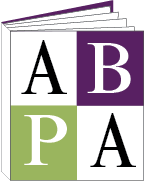 On November 18, the Association of American Book Producers (ABPA) hosted a panel on “Developing Winning Kits for Kids and Adults.” The three panelists, ably moderated by Karen Matsu Greenberg, were Richard Burgess, Associate Director Manufacturing Planning at Scholastic, Nanette Delumpa-Roach, the Director of Vendor and Product Compliance at Barnes & Noble and Brooke Lindner, Director of Product Development for Kits and Gifts at Parragon International.
On November 18, the Association of American Book Producers (ABPA) hosted a panel on “Developing Winning Kits for Kids and Adults.” The three panelists, ably moderated by Karen Matsu Greenberg, were Richard Burgess, Associate Director Manufacturing Planning at Scholastic, Nanette Delumpa-Roach, the Director of Vendor and Product Compliance at Barnes & Noble and Brooke Lindner, Director of Product Development for Kits and Gifts at Parragon International.
Each panelist gave a presentation about his or her company and job. Burgess talked about sourcing product for Scholastic, mostly in Asia (although less now from southern China because of wages and tariffs on dumping), and primarily for the clubs and fairs. Lindner showed product from Parragon’s many lines including its own brands like Craft Factory, which has moved out of the book aisles and into toy and craft sections. But licenses are a huge part of Parragon’s business, and Disney products can produce stratospheric sales: a Disney Princess “happy tin” containing books, stickers and felt pens, has sold a million units in the UK so far (it’s coming to the US in January). And when a product is successful, the package is reproduced for other licenses.
In fact, given the labor and logistics involved in producing book/kits, the panelists agreed that successful formats should be applied to as many licenses and material as possible. At the same time, B&N’s Delumpa-Roach cautioned that U.S. laws make both producers and retailers responsible for the materials that go into any product, regardless of the age of the target market. The audience, many of them packagers, asked all three panelists detailed questions about responsibility and liability, and were assured that, once the files were sent to the publisher, their hard work was done. Still, finding a winning format that can be produced safely, cheaply and on schedule, provoked one audience member to mutter: “It makes producing a book seem pretty easy.”





